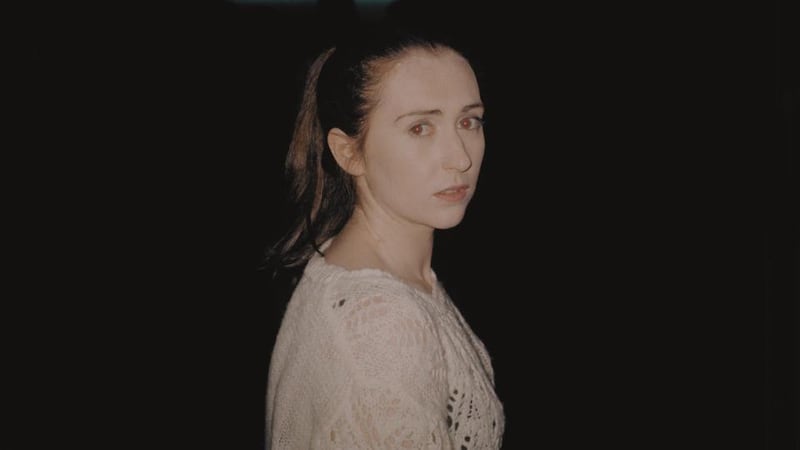On the face of it, Ciarán Óg Arnold's I Went to the Worst of Bars Hoping to Get Killed, But All I Could Do Was to Get Drunk Again is an unlikely winner of the Mack First Book Award. Mack is a photographic imprint with a formidable catalogue. Arnold's book is modest in scale and unconventional in several respects apart from its unwieldy title. It is entirely visual, for one thing. There is no text. Normally, photographic books come with text attached. Its absence is liberating. We are cast adrift in a world of images and must make of it what we can, without an authoritative voice telling us what we are looking at and what it means.
Usually with texts in photographic books, the choice of writer is a way of validating the images, so Arnold missed out on that endorsement. Then, rather than looking outwards into the further reaches of the world, he looks emphatically inwards. He is from Ballinasloe, and the photographs are all taken there. But they are about Ballinasloe only in so far as that is where he happened to live. There is a powerful sense of being trapped in the tight orbit of a small town, but it could be any small town.
Night vision

We see a fragmented, fragmentary view of the place, and we see it by night. As the title – from the first line of a poem by Charles Bukowski, the celebrated chronicler of American lowlife – indicates, Arnold zeroes in on the weekend rituals of bars and clubs. People, objects and places emerge out of the darkness. Often they are barely glimpsed in the half-light of dimly lit interiors, or momentarily illuminated by a stray beam of light.
It is a murky world of drinking, messing, talking and arguing, of masculine swagger and bluff, of hanging around and staggering home; there’s a troubling gulf between masculine and feminine. If it sounds alarmingly bleak, it is, but it is also a world of hurt, longing, poetry and desire.
Arnold’s achievement is to convey the complexity of feelings at the heart of the mundane.
A sense of boozy despair is shot through with intimations of something like immense, limitless promise that is tantalisingly out of reach. Like the sentiment famously attributed by Max Brod to Franz Kafka, about there being an infinite amount of hope: “. . . but not for us”.
Arnold is not a moralist, looking disapprovingly at a culture – perhaps a specifically Irish culture – of vacuous drunkenness, although it would be possible to interpret the book that way. He aims for something else entirely: to put us at the heart of a world, so that we can see what it looks like from the inside.
Telling detail
He is an astute observer with an eye for telling detail, whether it be a solitary figure in the crowd whose expression suddenly gives the game away, rendering them utterly lost and defenceless or, on occasion, revealing an otherwise disguised depth and sensitivity. Or it might be everyday architectural incongruity: a chandelier hung from the roof timbers of a barn (a breathtakingly good photograph on many levels), or the tacky veneer allied to brute functionality of form in buildings that, inside and outside, should frame pivotal social interaction.
The environmental incongruities are sure signifiers that something is amiss in the fabric of society. Why are such crucial social arenas pushed aside to the margins?
Two goats sitting in a field are like guardians of ancient wisdom. Arnold could have taken all this material and pushed it in the direction of bog gothic. He doesn't do that, though an ominous edge, a feeling of underlying menace is certainly there, not least in the many, subtle references to suicide (the Bukowski poem is called The Suicide Kid). But a dark lyricism is what comes through most strongly, and there is, beyond sympathy, a tender empathy for his subjects.
When he went to study for a master of fine arts degree in photography, he met Paul Seawright and Donovan Wylie, who encouraged him to keep doing what he was doing. The book form lends itself to photography, and especially a series of photographs. Arnold’s book, beautifully designed by himself and Grégoire Pujade-Lauraine, is a work of art.
- I Went to the Worst of Bars Hoping to Get Killed, But All I Could Do Was to Get Drunk Again by Ciarán Óg Arnold is published by Mack, €25, mackbooks.co.uk













